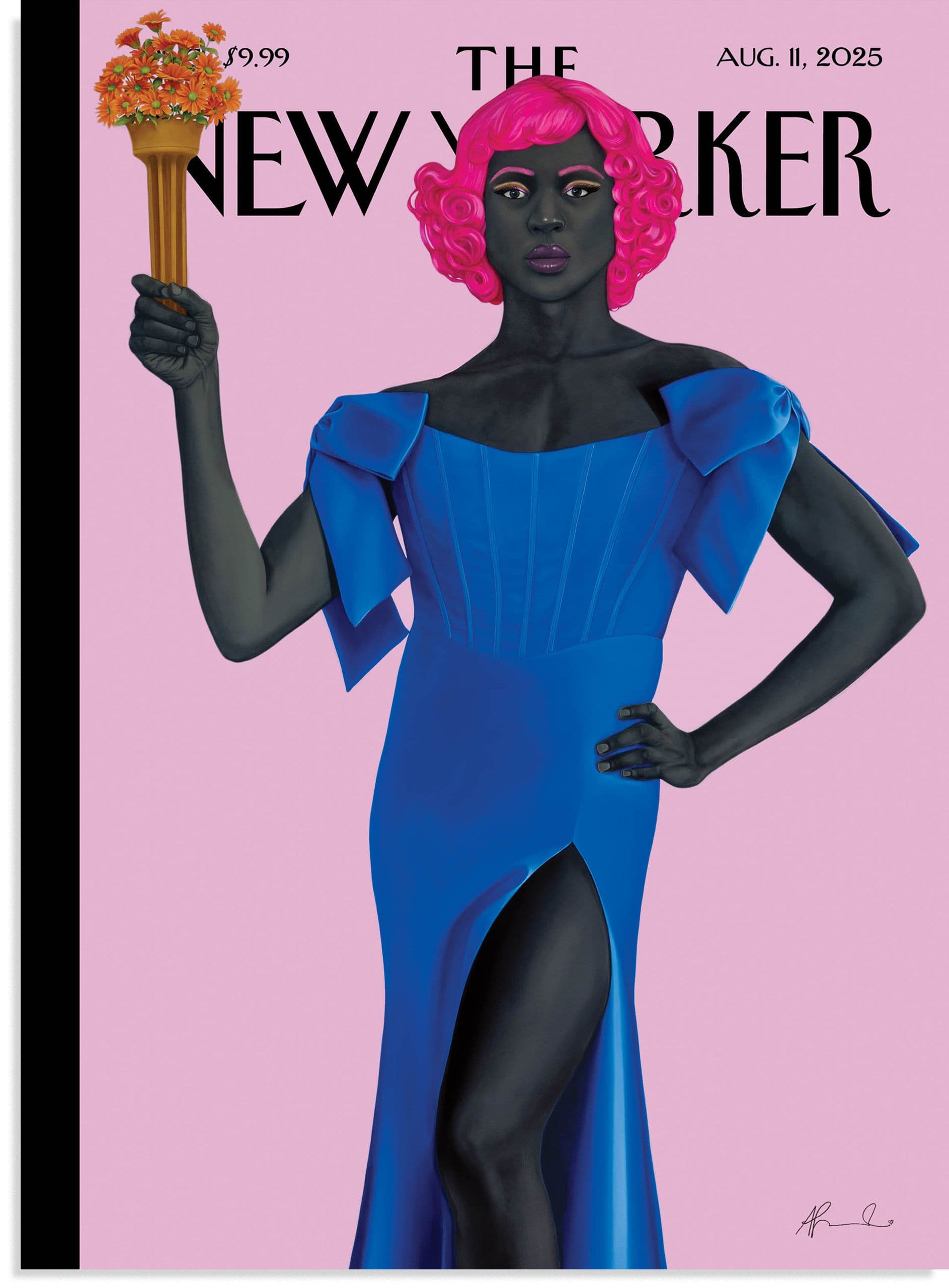"Trans Forming Liberty" New Yorker Cover Sparks Debate Following Smithsonian Withdrawal

New York, NY – Artist Amy Sherald's painting, "Trans Forming Liberty" (2024), featuring trans model and performance artist Arewà Basit as a reimagined Statue of Liberty, is prominently displayed on the August 11, 2025, cover of The New Yorker. This comes after Sherald controversially withdrew her "American Sublime" exhibition from the Smithsonian’s National Portrait Gallery due to alleged censorship concerns surrounding the artwork.
The decision to feature the painting on the magazine's cover has ignited public discussion, with some social media users expressing strong negative reactions. One tweet from "MissionLoco" stated, "> Here is this week’s cover. Trans Statue of Liberty. Just tragic on every every level." This sentiment highlights the divisive nature of the artwork for some audiences.
Sherald pulled her exhibition from the Smithsonian after learning the museum was reportedly considering removing "Trans Forming Liberty" or contextualizing it with a video that would include anti-trans views. According to Sherald, this move was influenced by a "broader climate of political hostility toward trans lives" and pressure from the Trump administration, which had issued an executive order in March 2025 to curb "politically divisive content" in federally funded institutions.
The Smithsonian, for its part, stated it aimed to contextualize the work rather than replace it, expressing regret over the exhibition's cancellation. However, Sherald maintained that such a compromise would "diminish the autonomy" of the artwork and its subject. The artist emphasized the painting's intent to challenge conventional representations of national symbols.
In a statement to The New Yorker, Sherald articulated the artwork's message: "Trans Forming Liberty challenges who we allow to embody our national symbols—and who we erase. It demands a fuller vision of freedom, one that includes the dignity of all bodies, all identities. Liberty isn’t fixed. She transforms, and so must we. This portrait is a confrontation with that truth." The painting, which depicts Basit in a pose reminiscent of Lady Liberty, uses a blue and pink palette, subtly referencing the trans flag.
The artwork’s journey from a contested museum piece to a prominent magazine cover underscores ongoing debates about artistic freedom, representation, and the role of cultural institutions in a politically charged environment. The New Yorker's decision to feature the piece ensures a wider public discourse on its themes of identity, liberty, and inclusion.